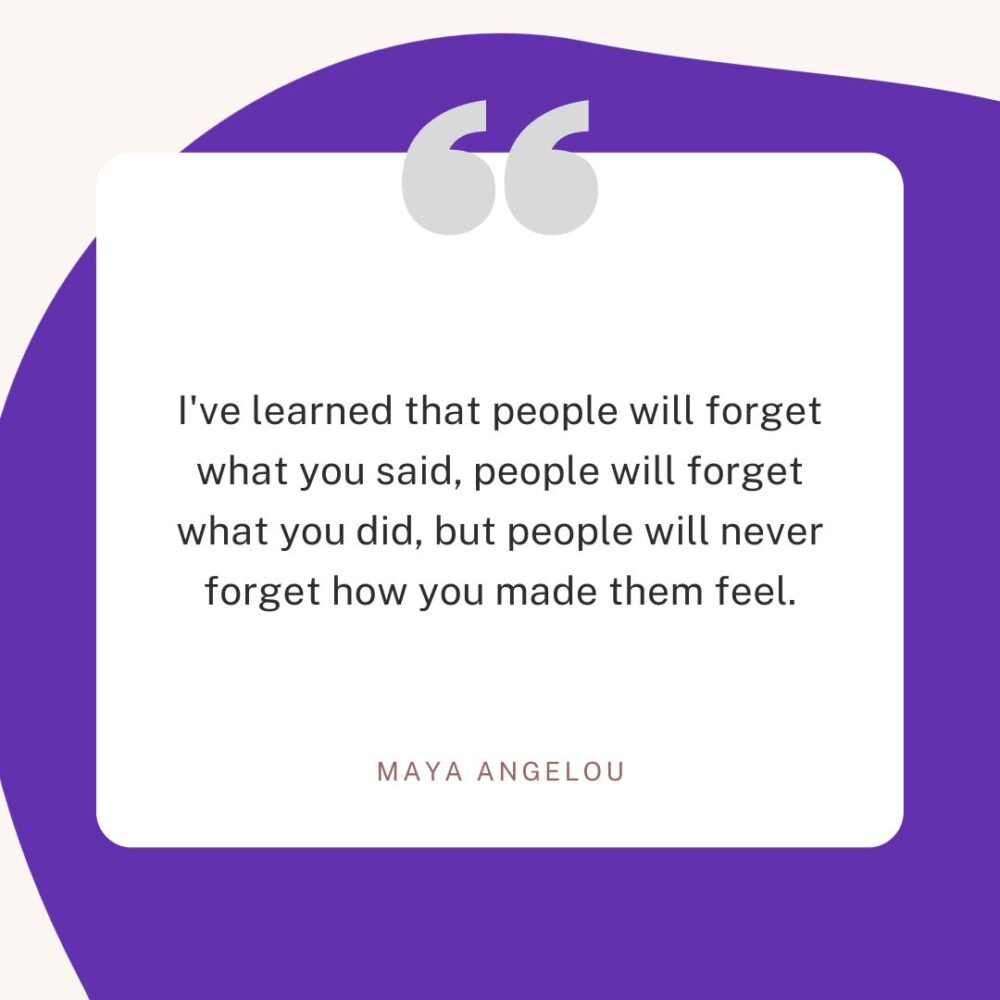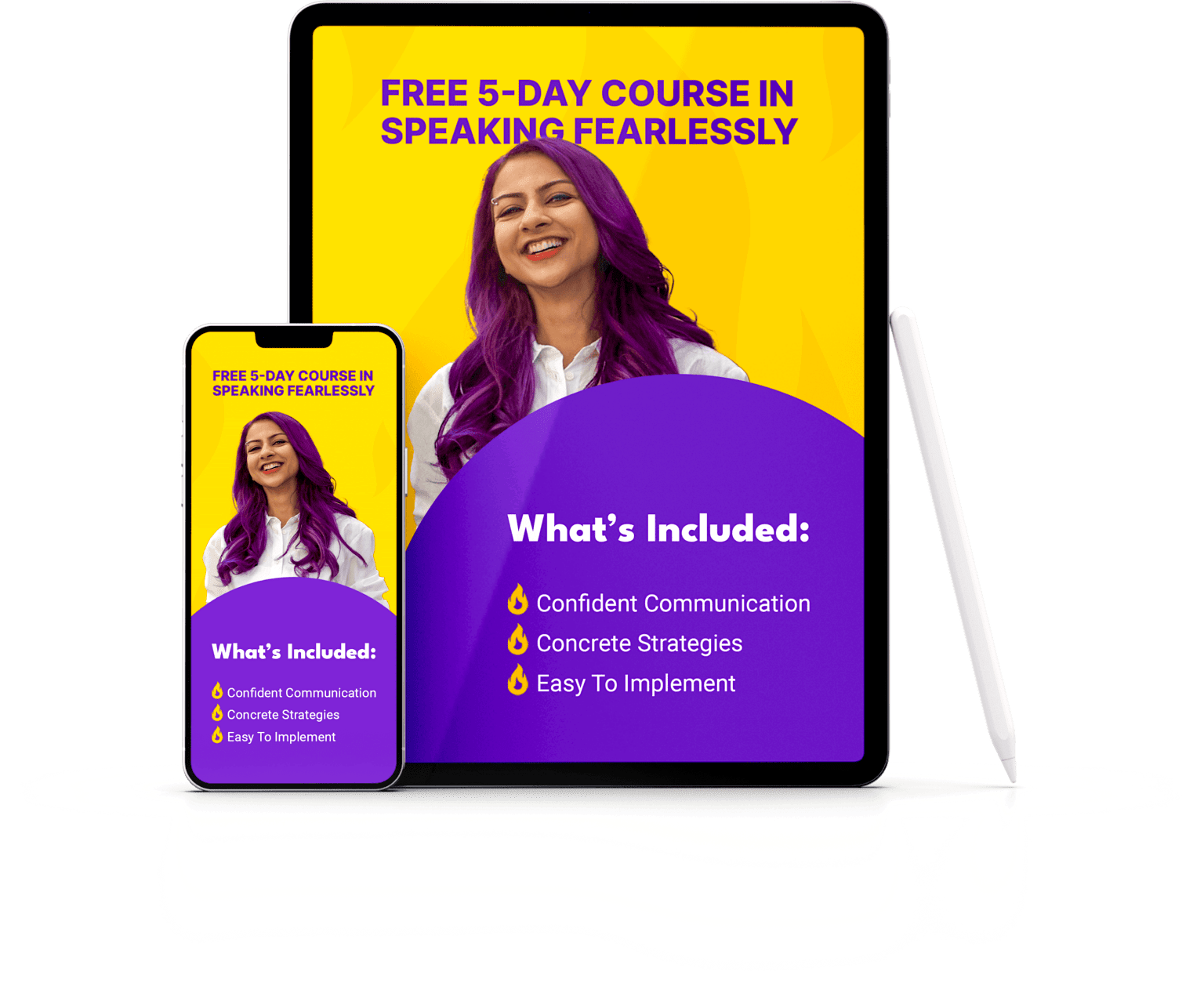Storytelling is an art that has been captivating audiences for centuries. From ancient myths to modern cinema, stories have the power to engage, inspire, and connect with people on a deep and emotional level.
Yet, to truly captivate your audience during presentations, one must venture beyond the beaten path. Simply telling stories isn’t enough. You need to tell the right stories in the most effective way to have impact.
I’m here to guide you through the art of storytelling during presentations. In this comprehensive guide, we will explore various storytelling techniques that will help you captivate your audience, making your presentations memorable and impactful.
Table of Contents
1. The Power of Storytelling in Presentations
Before we dive into the techniques, it’s essential to understand the significance of storytelling in presentations. Stories have a unique ability to create a connection with your audience.
People may not remember facts and figures. But they remember stories.
A good story makes your message relatable, memorable, and emotionally resonant. A well-crafted story can transport your audience into a different world, helping them better understand and remember your message.

Image by Freepik
2. Know Your Audience
Tailoring your story to your audience is key.
The best stories can fall flat if your audience doesn’t relate to them. And the most average stories can have a long-lasting impact if delivered to the right audience.
Understand your audience’s needs, interests, and pain points. Consider their demographics, such as age, gender, and background. The more you know about your audience, the more you can create a story that speaks to them on a personal level.
3. 12 storytelling techniques
1. The Hero’s Journey: A Timeless Structure
The hero’s journey, a narrative structure identified by Joseph Campbell, is a powerful template for storytelling. It involves a hero who embarks on an adventure, faces challenges, and ultimately returns transformed. Incorporating this structure into your presentation can provide a compelling narrative arc.
Remember that you define who the hero in the story is- it doesn’t need to be a fairytale type of story. The hero can be your ideal customer, for example – and you can tell the story of how they get what they want through using your product or service.

2. Visual Storytelling with Imagery
Everyone uses visuals in their presentation. But are you using them right?
Stop using images to decorate your slides. Think of them as vital parts of the story – let them add to, enhance or tell part of the story for you.
For example, instead of saying your team is efficient, show a picture of a relay team winning a race and ask the audience to link that image to your team.
3. Emotional Appeal: The Heart of Your Story
Invoke emotions in your storytelling. Whether it’s joy, sadness, excitement, or empathy, emotions create a deeper connection with your audience.
Share personal anecdotes and experiences to make your story more authentic and relatable.
Instead of being in “I’m going to inform them” mode, aim to be in “I’m going to appeal to their emotions” mode.

4. The Art of Suspense and Surprise
Embrace unpredictability and surprise in your storytelling to keep your audience engaged. Subvert expectations, pose questions, challenge assumptions, and introduce unexpected elements that keep your audience engaged and eager to discover what happens next.
Unexpected twists in your story can make your presentation more compelling.

5. Use Humor Thoughtfully
Humor is a powerful tool in storytelling. It can break the ice, lighten the mood, and make your audience more receptive to your message. However, use humor thoughtfully, ensuring it aligns with your overall message and the preferences of your audience.
Rather than relying on typical punchlines, use subtle and unexpected humor to create genuine connections and laughter. Instead of aiming for a big “hahahahaha” (which can be a hit or a miss), aim to amuse your audience or enable them to think.
6. Metaphors and Analogies: Making Complex Ideas Accessible
Complex ideas can be made more accessible through metaphors and analogies. Compare abstract concepts to familiar objects or situations. Tell a story or create a link between a well-known story and your key takeaway.
For example, ask the audience to remember Cinderella’s story. And then ask them – “Would you want your customer to go door to door looking for the ideal solution to their problem, or would you want to make your product or service obvious and accessible to them?”

Image by pikisuperstar on Freepik
7. The Science of Empathetic Storytelling
Center your stories around the concept of empathy. Share narratives that explore the emotions, experiences, and challenges of individuals from diverse backgrounds.
Show people what the main characters in the story – whether it’s your company, your customer or your team – are thinking and feeling. This approach not only deepens the audience’s understanding but also fosters empathy and connection.
8. Narrative Alchemy: The Transformation Tale
Narratives that focus on transformation and evolution are incredibly compelling.
Every great story is a story of change. When you focus on change, or a transformation that you’re promising, the audience looks out for it before it happens. They listen for it as it’s happening. And they feel satisfied after they hear all about it.
Win-win-win.

9. Tales of the Senses: Sensory Storytelling
Engage your audience’s senses by painting vivid, multisensory images with your words.
Describe scents, textures, tastes, and sounds that transport your listeners to the heart of your narrative. Sensory storytelling fosters a deeper emotional connection and a more immersive experience.
This is the most under-utilized and underrated tool in storytelling – and yet it works like magic because people love imagining things. They just need a helping hand – you!
10. Engage Your Audience with Interactivity
Involve your audience in your story. Ask questions, encourage participation, and create moments of interaction. This engagement makes your presentation more dynamic and memorable.

Image by wavebreakmedia_micro on Freepik
11. The Power of Silence: Pausing for Impact
Silence is a storyteller’s unsung ally. Silence, when used effectively, can be as powerful as words.
Use pauses to your advantage to create anticipation.
Strategic pauses can create tension, emphasize a point, or allow your audience to absorb the depth of a moment. Pausing at the right moment lets the audience think about something meaningful or significant that you said.
12. The Takeaway: Crafting Memorable Insights
End your presentations with a compelling takeaway. It could be a thought-provoking question, a challenge to action, or a profound insight.
Give your audience something to think about after your presentation ends.
4. Practice and Rehearse Your Story
I can’t emphasize enough how much more effective you’ll be when you practice your story instead of winging it.
Most people think that their prep work is done when they’re done with their slides. But that’s when the real work starts. Deliver your story with the most confidence by practicing and rehearsing. Know your story inside out so that you can focus on your delivery.
Practice your tone, pacing, and gestures to ensure a smooth and engaging performance.
5. Feedback and Continuous Improvement
After your presentation, seek feedback from your audience. What worked well? What could be improved? Use this feedback to refine your storytelling skills and make your future presentations even more captivating.
Conclusion: Mastering the Art of Storytelling
You are now equipped to craft stories that captivate, engage, and leave a lasting impact on your audience.
Storytelling is a potent tool for captivating your audience during presentations. By understanding the psychology of storytelling and incorporating these techniques into your presentations, you can create a lasting impact.
Your stories will not only be memorable but also emotionally resonant, making your message more compelling and persuasive. As you continue to hone your storytelling skills, you’ll find that your presentations become more engaging and your audience more captivated.
Want to become a more powerful speaker? Let’s talk.



